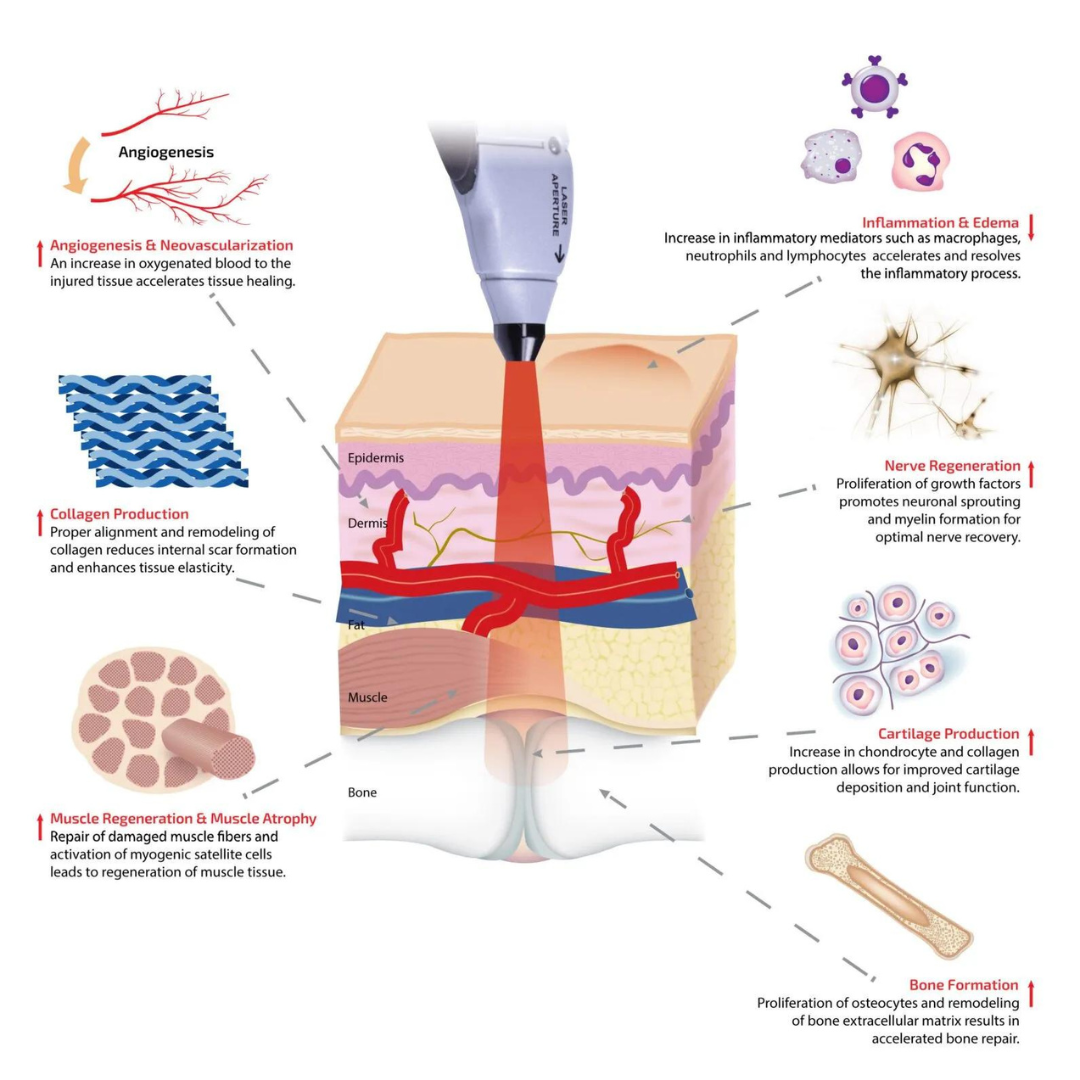Fascination About Photobiomodulation
Wiki Article
The 5-Second Trick For Photobiomodulation
Table of ContentsThe Best Strategy To Use For Photobiomodulation3 Simple Techniques For PhotobiomodulationGet This Report about PhotobiomodulationA Biased View of Photobiomodulation
Laser therapy is a clinical treatment that utilizes focused light to boost a process called. Throughout PBM, photons get in the cells and communicate with the cytochrome c facility within mitochondria. This interaction activates an organic cascade of occasions that leads to a boost in cellular metabolism, which can in addition to increase the healing process.There is consensus that the application of a healing dose of light to impaired or useless tissue results in a cellular reaction moderated by mitochondrial devices. Photobiomodulation. Research studies have actually shown that these modifications can influence discomfort and swelling, in addition to, cells repair
Modifications in ATP, reactive oxygen types and nitric oxide adhere to light absorption by Cc, O. These results are redox state and dose dependent.

The Basic Principles Of Photobiomodulation
PBM gadgets have actually been cleared for advertising and marketing by FDA with the Premarket Notification/510( k) process as adjunctive tools for the short-lived relief of pain. These clearances were based on the discussion of clinical data to support such cases (Photobiomodulation). In this therapy, a source of light is positioned near or touching the skin, enabling the light power (photons) to pass through tissue where it interacts with chromophores situated in cells causing photophysical and photochemical adjustments that lead to modifications at the molecular, cellular and tissue levels of the bodySurprisingly, current research study shows that light can enhance performance in regular tissues and cells. The potential applications of PBMT are countless and are being explored experimentally at the standard scientific research, pre-clinical and professional degree. The present medical uses are for the alleviation of discomfort and inflammation and the treatment of sports injuries.

The treatment criteria and variety of sessions needed for PBMT depend on location and cause. PBMT normally needs greater than one therapy for optimal pain alleviation. It might take numerous treatments for the results to become obvious. records that it can take anywhere from 8 to 30 sessions for a therapy to be totally reliable, and some people discover it necessary to go through treatment two to four times each week.
Photobiomodulation Can Be Fun For Anyone
Therapy criteria for PBMT were originally developed using cells in vitro and in little animal models. These therapy criteria normally had a reduced irradiance and fluence and functioned well for cutaneous applications. When clinicians began to use PBMT to treat frameworks that were visit situated much deeper in the body, they used these specifications with negative outcomes.
We currently recognize that these unfavorable researches were due to inaccurate tool and treatment specifications for transcutaneous therapy of much deeper structures. Current developments in laser treatment tools and even more research right into the suitable does have actually considerably improved the results of PBMT. For treating deep cells, the wavelength of light made use of determines the deepness of infiltration right into a tissue.
It is important that a medical professional makes use of the proper wavelength of light and specifications to deal with a problem. One wavelength and one set of therapy criteria will not be efficient for all problems. Adverse adverse effects have not been reported from the usage of PBMT (Photobiomodulation). Upgraded June 27, 2016Juanita j
Light therapy is a non-invasive treatment that functions by enhancing the ability of the cell to produce power (ATP) to heal the location being dealt with. Therefore, it can reduce swelling, swelling, and discomfort in the location. Research in this location is broadening, with more thorough research papers linked listed below for those who want to discover extra.
An Unbiased View of Photobiomodulation
In the very first experiment, Dr. Endre Mester, made use of shaved rats and observing how the laser influenced their ability to grow hair compared to the team that was not getting LLLT. He discovered that the group of mice getting LLLT were able to grow their hair back much more rapidly than the group of mice that really did not get LLLT (Hoon C, et al; 2012).This treatment is termed this way to distinguish the distinction between the lasers some occupations use to reduce (eg. Low-level light treatment is pain-free, non-invasive treatment.
LLLT has a biphasic reaction, meaning that lower dosages are typically attended be more useful than higher doses. That being claimed, doses greater or lower than the optimal dosage does not impact (Hoon C, et alia; 2012). Because of this, it can be hard to have research studies on LLLT with a see this site lot of parameters.
Some business incorporated the 2 (LED and laser) to provide an extra click for info well-shaped therapy given that lasers can permeate much deeper than LED and infrared light (Norman Doidge, The Brain's Method of Recovery, 2015). During treatment, the location that is being dealt with is revealed to LED light from a Bio, Flex Laser, which is at 660 nm wavelength, complied with by infrared light at 830-840 nm wavelength.
Report this wiki page